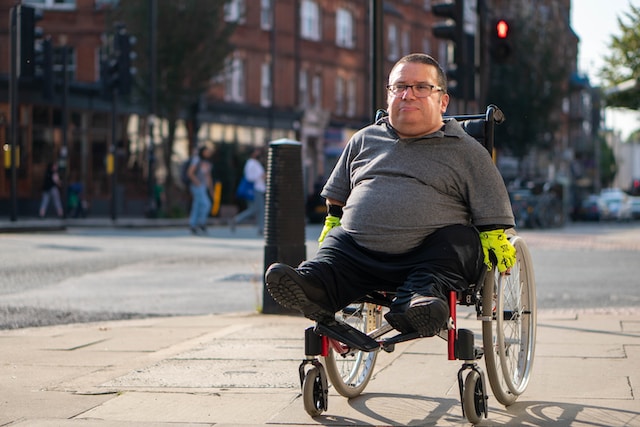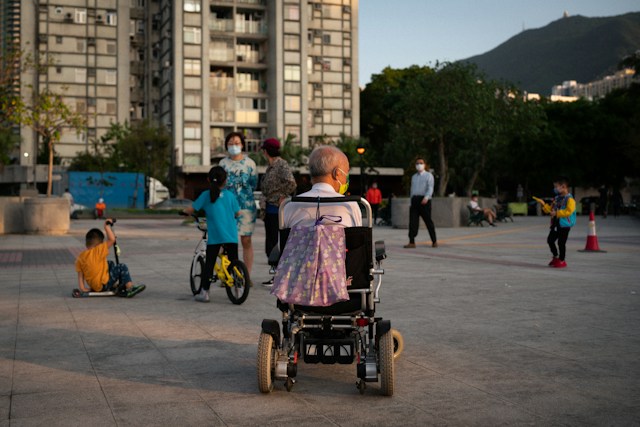In a world where fashion and function often collide, there’s a rising star in the apparel industry: adaptive clothing. This unique and innovative clothing category caters to individuals with diverse mobility and dressing challenges, making it easier for them to maintain their independence while also maintaining their style.
It has been propelled from a historically niche fashion segment into the mainstream. Particularly for men, adaptive clothing goes beyond style; it’s a game-changer, fostering independence and boosting confidence.
Major brands now embrace inclusive designs, offering a wide range of adaptive clothing options for men. Features such as velcro or magnetic closures, adjustable seams, and easy-access openings cater to a variety of needs. These elements not only provide practical benefits but also contribute to a stylish and modern look.
Adaptive clothing goes beyond functionality; it empowers individuals to retain independence for the most basic things they do for themselves, and it boosts confidence.
Who Needs Adaptive Clothing?
Adaptive clothing is not limited to one specific group; it benefits a wide range of individuals, including:
- Individuals with limited mobility or joint pain can greatly benefit from adaptive clothing that eases the process of dressing.
- Individuals with physical disabilities such as paralysis, cerebral palsy, or muscular dystrophy often find adaptive clothing indispensable for daily living.
- Adaptive clothing is available for children with sensory sensitivities or conditions like autism spectrum disorder (ASD).
- Those who use mobility aids on a daily basis to get around and care for themselves.
- Caregivers who assist individuals with dressing can find adaptive clothing helpful in providing better care.

Key Features of Adaptive Clothing
The hallmark of adaptive clothing lies in its thoughtful design features:
- Front and Back Closures: Adaptive clothing often features front or back closures, eliminating the need to raise arms or twist the body during dressing.
- Velcro and Magnetic Closures: Replace traditional buttons and zippers with easy-to-use Velcro or magnetic closures.
- Elastic Waistbands: Elastic waistbands provide comfort and flexibility, accommodating changes in body shape.
- Easy-Access Openings: Adaptive clothing may have strategically placed openings for medical devices, catheters, or feeding tubes.
- Seamless and Tagless: To prevent skin irritation, adaptive clothing often comes without irritating seams or tags.
How Adaptive Clothing Fosters Independence
Dignity is intricately tied to independence. The design principles of adaptive clothing contribute to this by allowing men to dress and undress with autonomy. From easy fastenings to clothing tailored for specific needs, adaptive garments empower individuals to navigate daily activities independently, fostering a profound sense of dignity.
I’ve seen this firsthand. When an elderly relative started encountering difficulties with hand movements due to arthritis and overall weakness, I started looking for shirts that had larger buttons for them to be able to handle buttoning and unbuttoning their shirt easily. I wasn’t sure what I would be able to find, and I was pleasantly surprised when I came across a number of websites such as Buck and Buck Clothing and Silvert’s.
They had a wide range of adaptive clothing consisting of shirts, pants, shoes, and other items. They had shirts with a button placket, but which could be fastened with individual velcro buttons. This created the look of a button-down shirt, but one which was easier for my relative to wear.
I decided to order a few from each of the websites and didn’t know how they would hold up after multiple washings. Well, I can tell you that I was impressed with the quality of the material and how durable the velcro fasteners have been after being worn and washed over a period of almost 2 years.
Having access to this type of clothing has given my elderly relative the knowledge they can be self-reliant in certain areas of their life, thereby improving their outlook and confidence.

Navigating Style and Comfort: Practical Tips for Choosing Adaptive Clothing
Consider Mobility Challenges
The first step in choosing adaptive clothing is a thoughtful assessment of individual mobility challenges. Factors such as limited range of motion, joint stiffness, or the need for assistance should guide the selection process. Understanding these specific needs is crucial in making an informed decision.
Professional/Casual Style
Many individuals think of adaptive clothing and immediately think of sweats and nightgowns. Remember, individuals wear adaptive clothing for many reasons, and just because you or a relative needs it doesn’t mean you have to sacrifice your style.
Pembrook’s is an adaptive clothing brand I discovered that has elastic waist pants that look like slacks—making them an excellent option for those who need adaptive clothing but also work or attend professional events. They come in several styles, including jeans.
Don’t Forget Comfort
Comfort is king, and the fabric of adaptive clothing plays a pivotal role. Look for clothing made from soft, breathable fabrics that prioritize comfort.
Consider features like flat seams to minimize irritation and tagless labels for a seamless experience. The modern landscape of adaptive clothing ensures that comfort doesn’t come at the expense of style.
Look for Easy Fastenings Like Magnetic Closures and Velcro Straps
Innovations in adaptive clothing often revolve around easy fastenings, such as magnetic closures and Velcro straps. These features simplify the process of putting on and removing clothes, providing ease in dressing by reducing the time and effort required. Assess the ease of fastenings based on individual dexterity and preferences.
Consider Seated Wear
For individuals who spend a significant amount of time in wheelchairs, seated wear offers tailored solutions. Look for adaptive pants and shirts with features like reinforced fabric at the seat, allowing for durability and comfort during extended periods of sitting.
Adaptive Shoes: User-Friendly Footwear Choices
Footwear is a crucial aspect of adaptive dressing. Look for shoes with easy fastenings, such as Velcro or elastic straps, that provide convenience and simplify the process of putting on and taking off shoes without sacrificing style.

Where to Find Adaptive Clothing
If you’re interested in exploring adaptive clothing options, you can find them in various places:
- Online Retailers: Numerous online stores specialize in adaptive clothing, offering a wide selection and convenient shopping experience. Silverts, Buck and Buck Clothing, and Pembrook are some of the brands I have found.
- Specialty Stores: Some physical stores and boutiques focus on adaptive fashion, providing an opportunity for in-person shopping and fittings.
- Secondhand Stores: Many individuals donate adaptive clothing when it is no longer needed. Check in secondhand stores near you just be prepared to sift through the racks to find items that work.
Final Thoughts on Adaptive Clothing for Men
Every stitch in adaptive clothing tells a story of independence reclaimed, confidence rediscovered, and self-expression celebrated. It’s a journey where every garment is not just a piece of fabric; it’s a tool for individuals to navigate the world with confidence and dignity.
Whether you’re a caregiver seeking functional clothing solutions or an individual with specific dressing requirements, adaptive clothing is a testament to the power of fashion to empower and uplift.
By blending comfort with style, adaptive clothing empowers individuals to continue their daily rituals with as much ease in dressing as possible. It also provides caregivers reassurance that they are supporting the individual’s needs with respect.
Do you need more than just adaptive clothing for your elderly family member or friend? Check out our resources for caring for aging parents for a comprehensive list of all the services and help available to you.



















Having read this I believed it was really enlightening.
I appreciate you spending some time and effort to put this short
article together. I once again find myself personally spending a significant amount of time both reading and leaving comments.
But so what, it was still worth it!